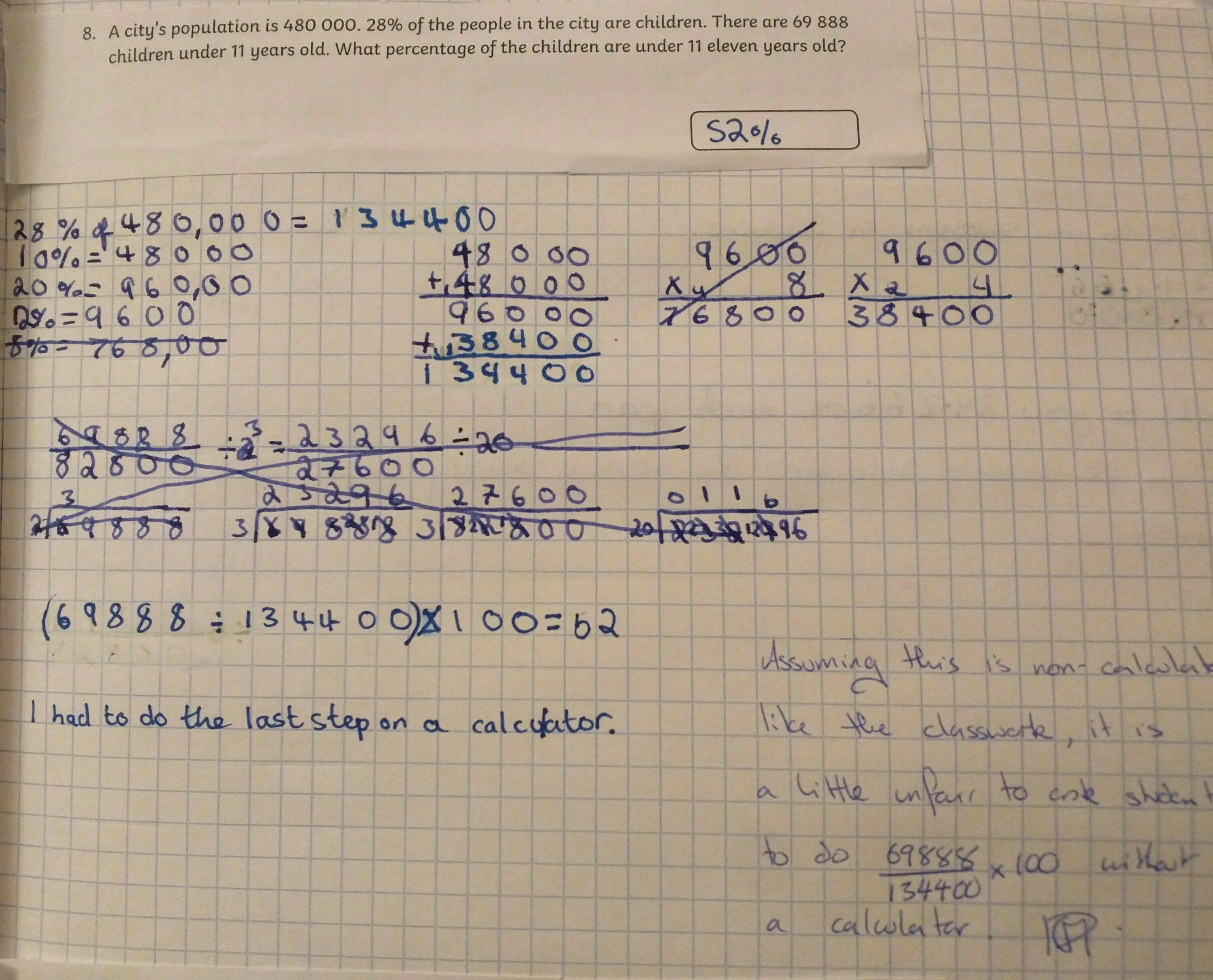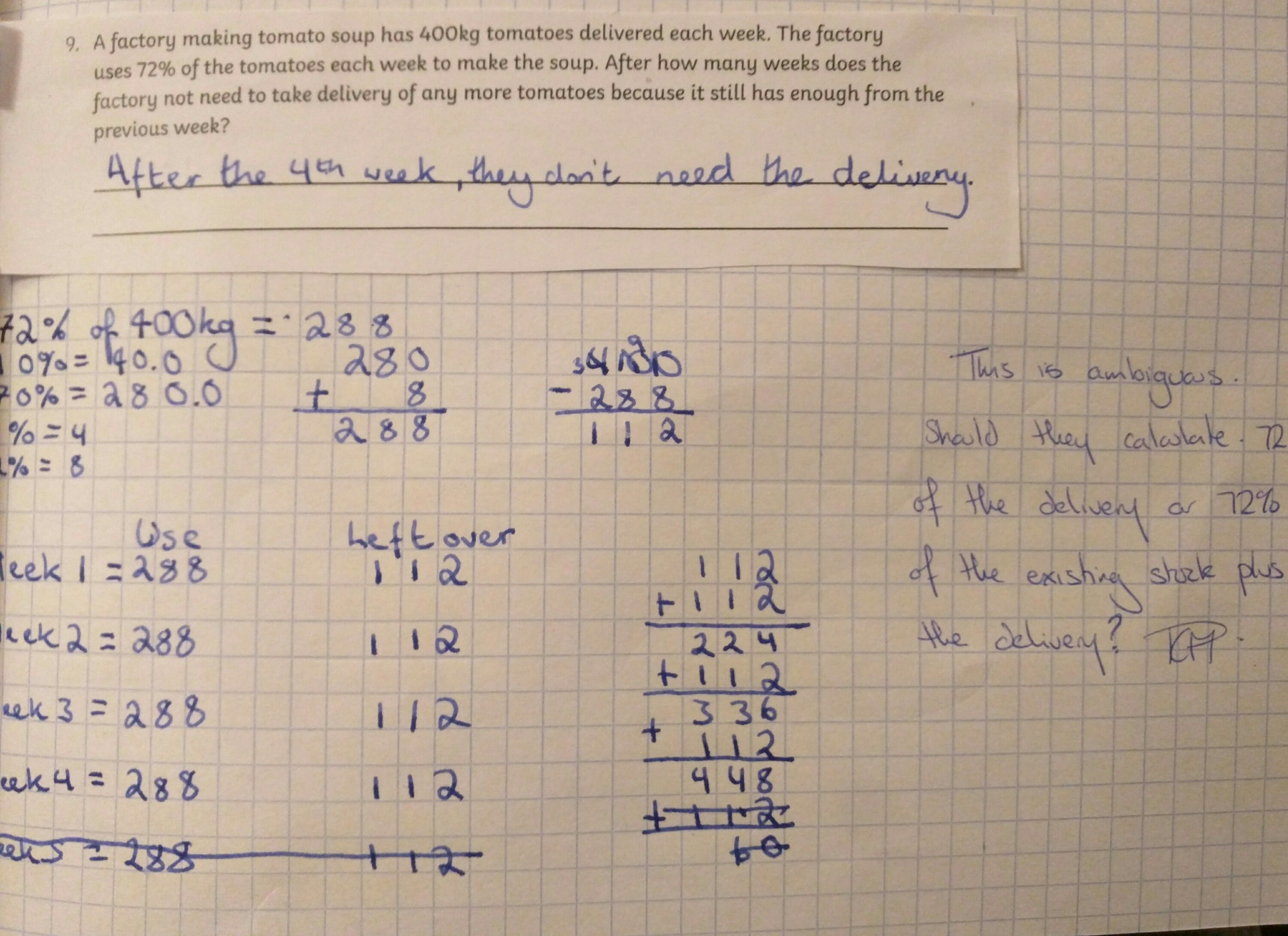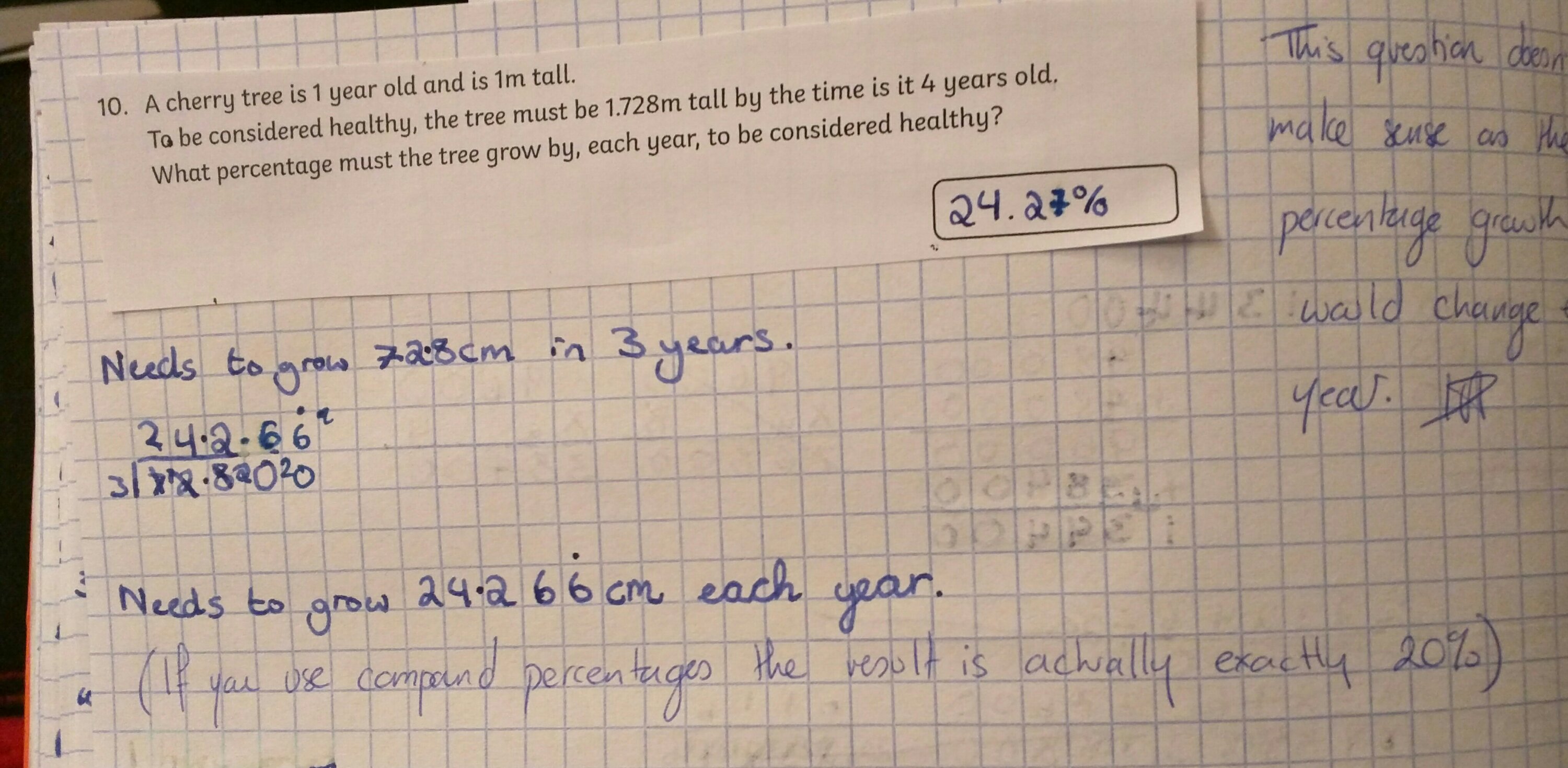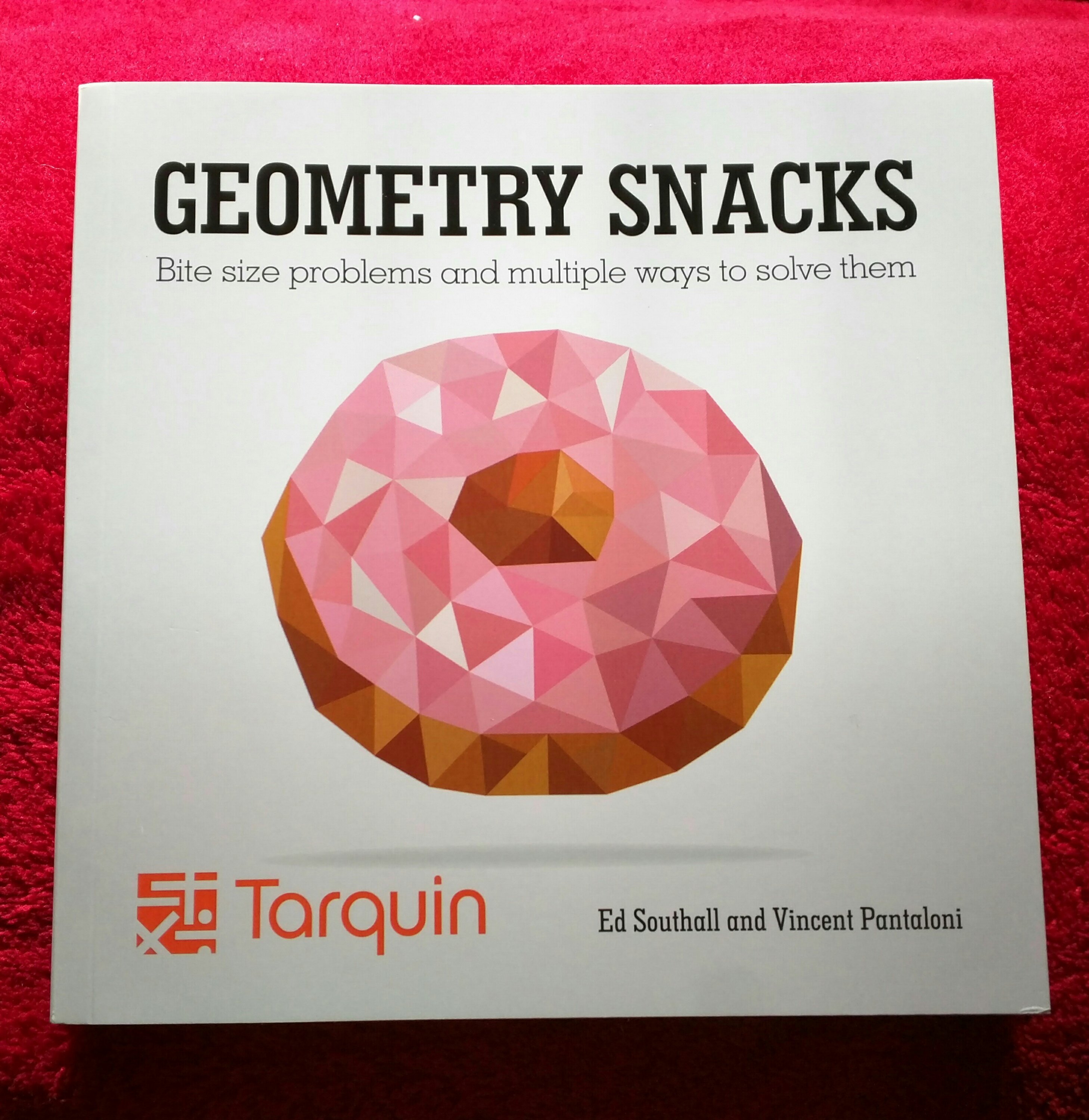Now, I’m straying from my usual positivity today because I’m frustrated by a worksheet. It was set for the eldest in Primary School as non-calculator classwork to be finished at home for homework. Topic is straightforward enough: Percentage Problem solving.

First gripe: I don’t think the teacher had time to check whether the later questions were suitable to be non-calculator. There were divisions my KS4 students would baulk at. Fair enough, we’re all human, we’ve probably all misjudged an activity like that.
Main gripe: this was a paid for resource. The Primary school will be paying a yearly subscription for these worksheets and I think they are being written by someone who actually doesn’t understand percentages. Someone is being paid for writing poorly worded questions.

But it gets better (or worse depending on your viewpoint). The last question is just … Well, let’s just say I’m not a fan. I was so annoyed I picked up pencil and paper and did it myself.

The set up asks you what percentage a tree must grow by each year, if it needs to reach a certain height by a certain year. Any decent student should know that percentage is proportional and thus it will grow in proportion to its existing height each year. That’s a compound percentage problem.
I remind you this is a 10 year old without a calculator doing this work. They calculated the required growth, divided by years and multiplied by 100. The result was a recurring decimal!
I assumed compound growth and worked out the answer as 20%.
I think the person writing the question added on 20% each year, then put their final answer in the question. That is a rubbish understanding of what a child would have to do to solve the problem.
As a teacher, I am fuming that schools’ valuable depleting budgets are being wasted on dross like this. I’d like to say this is the first worksheet from this online provider with questionable mathematical knowledge, but it isn’t. A teacher has trusted that the resource they printed out was accurate and useable and will now have to go back over this in class.
Of course critics will say that the teacher should have thoroughly checked every question, but this is the real world. If there was time to do that then there wouldn’t be companies making money from charging for resources.
Like this:
Like Loading...





